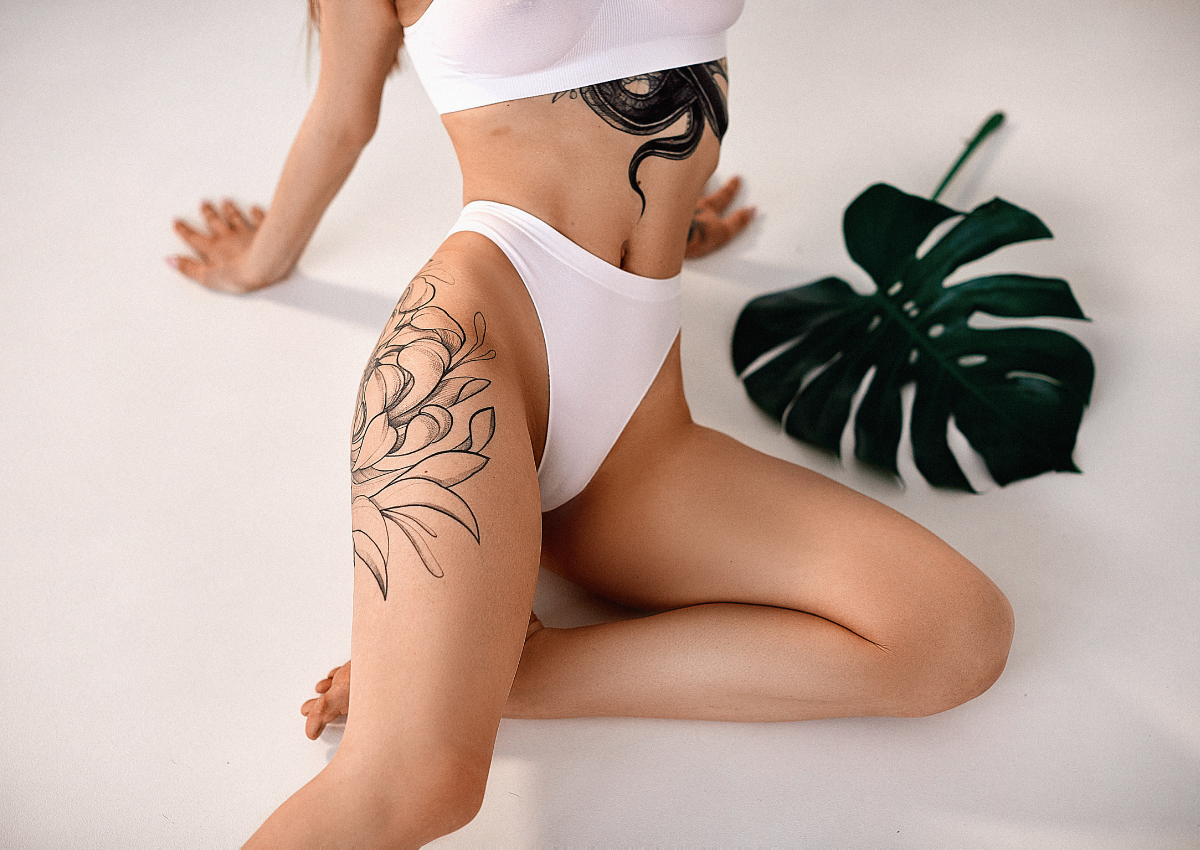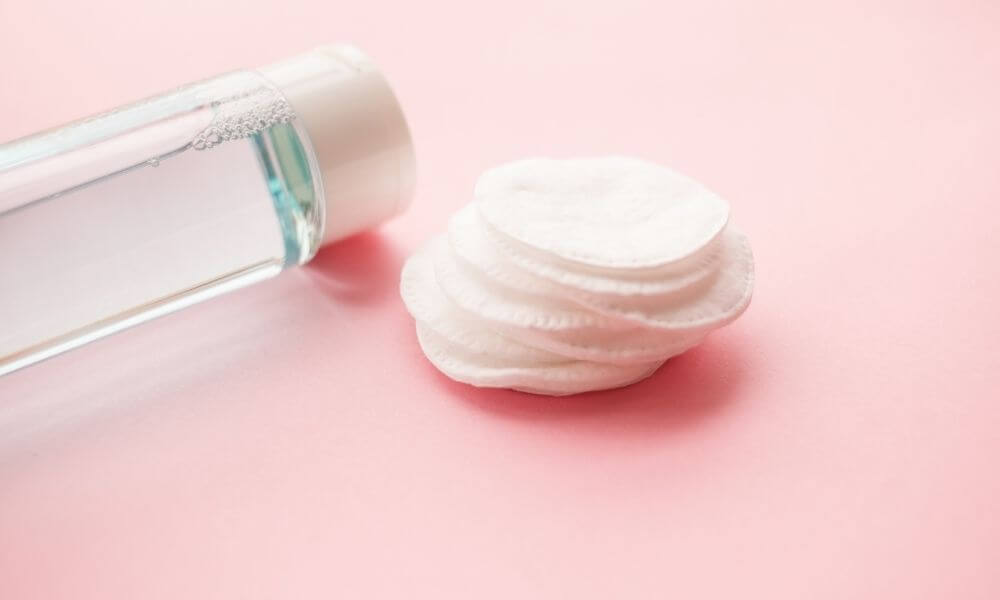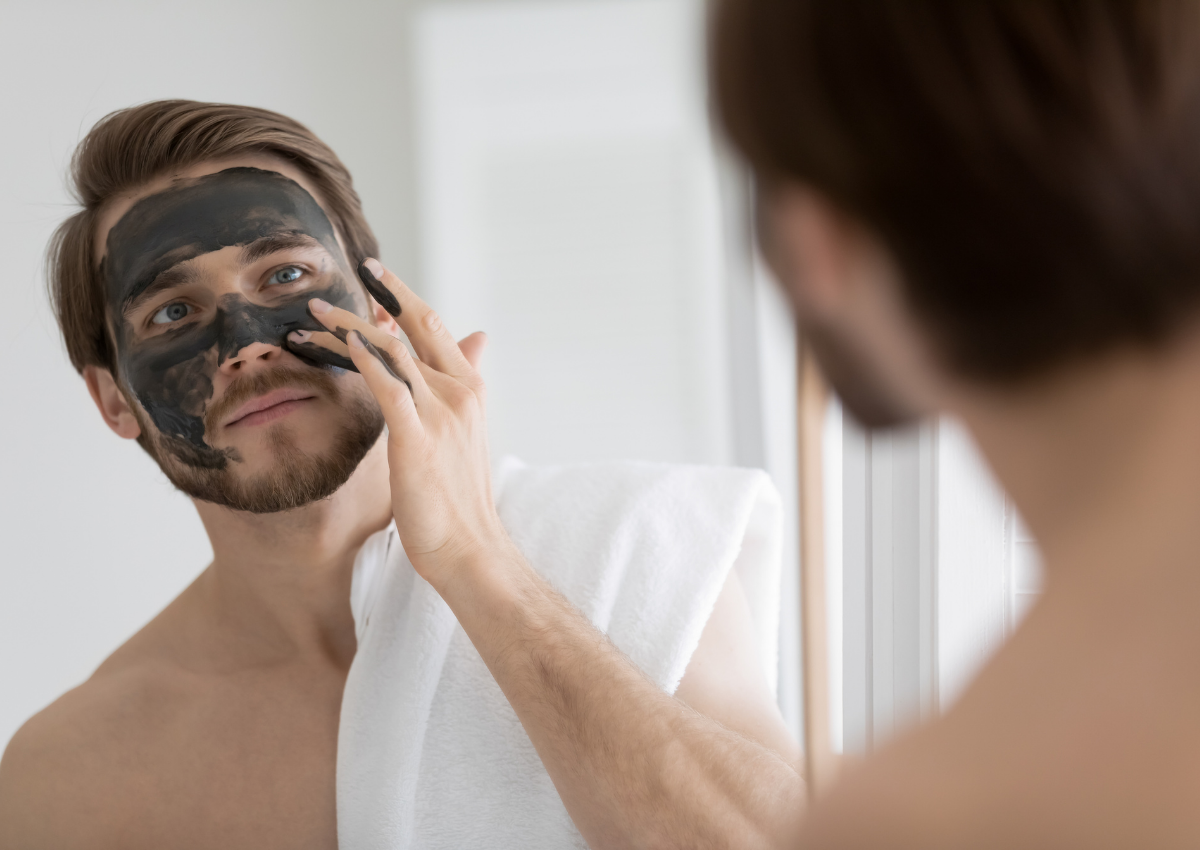
How to care for a tattoo with natural cosmetics
Tattoo
- Royal Spanish Academy
Drawings on human skin by introducing coloring materials under the epidermis through previously arranged punctures or stings
To mark, to leave a mark on someone or something

Piercing the skin with ink has been a custom since ancient times, carried out by different civilizations and for different reasons. There are as many reasons for marking the epidermis as there are individuals who want to do so. A tattoo always begins as a wound on the skin, which later becomes a voluntary and very personal scar.
Our goal today is not to ramble on about the initiation process and/or ritual, but rather to delve into the healing process; the most important part of the tattoo if we want it to heal properly.
Basic tattoo careSpeak from experience sharing everything I heard, read, learned and discovered with my own tattoos:
- Protect your tattoo: Your tattoo artist may have covered your new tattoo with cling film (very thin, transparent plastic or a bandage), so stick to the recommended time. If it's 4 hours, it's 4 hours, so don't remove the film before time, even if you're really looking forward to seeing how it turned out.
The reason is obvious: you must keep your newly made tattoo protected so that bacteria do not stick to it and so that the blood does not clot. Avoid any contact with dirty surfaces and once you have removed the paper, do not cover it with the same film again, you run the risk of infection. In fact, it is best to let it air out, it will heal much faster if you do it correctly.
- Cleaning: the first wash has arrived, don't be scared. It's very easy. Your tattoo artist has probably recommended that you wash the tattooed area 3 times a day with an antibacterial soap. It is essential that it is hypoallergenic, that it does not contain perfumes or dyes. Even if it is antibacterial, check the INCI and make sure it is natural. Your skin absorbs 65% of what you apply to it, but when it is newly injured this percentage is higher and the damage will also be higher. If you apply hygiene or care products with sulfates and other potentially harmful ingredients, there is a high chance that the area will become irritated and dry out very easily. It's easy, don't make it too complicated, you don't have to choose a strange soap. It's as simple as using a neutral soap . Always use warm or cold water and very important: Dry the area very well (humidity is always a hotbed of infections). When drying the tattoo, do not drag or rub, Press gently until all the moisture is completely absorbed . Kitchen paper is ideal for this. Never scratch or remove the scabs from the tattooed area.
Soaps I have used to clean my tattoos (they are practically the same ones I use all year round)
- Dr. Bronner's Liquid Castile Soap, my favorite is the one from mint and almond but when When I get a new tattoo, I always use Baby Mild (fragrance-free and for sensitive skin, it has no scent and is made from castile oil, it is ideal for this ).
- Soap Fragrance-free and sulfate-free for extremely sensitive skin, perfect for the entire body, including the face. It is ideal for cleaning all tattoos because it is a very gentle soap without soap, it does not create any foam .
- Moisturize: Use a moisturizing cream on the tattooed area every time you clean it and massage gently until your skin has completely absorbed it. If possible, avoid direct contact with clothing. If it is in a visible area, protect it with a cream with sun protection factor, although avoid direct contact with the sun as much as possible. Swimming in rivers, beaches and/or swimming pools is strictly prohibited for the following weeks (recommendations vary from 15 to 30 days). This care is essential if you want your tattoo to heal well and not lose color in the future.
Although sea water is natural, there are also other types of natural substances and waste floating around in it. Keep this in mind if you want your tattoo to heal faster, not itch, and look as good as it should.
- Buriti Balm by Pai Skincare; it goes a long way, absorbs very well, smells wonderful and is 100% natural. I use this balm all year round, as a maintenance balm (my favorite).
- St. John's Wort repair balm , it has a very intense smell and is very nourishing, it is fantastic because it is absorbed very quickly and it greatly relieves the sensation of heat, especially the first few days. I always recommend this balm if you have had a very large, coloured tattoo with a lot of filler. The skin suffers a lot in those cases.
- Beeswax ointment with propolis : it provides instant relief, heals very quickly and is absorbed fairly quickly. It only has one drawback: if it is very cold it solidifies, but with a little heat it dissolves easily.
Clean, moisturise and protect are three basic and routine care steps during the following days. Depending on the tattoo – whether it is shaded, raised…-, the area and the size, it will take more or less time to heal (from 15/20 days to 5 weeks). If you want to speed up this process, remember to take care of that new scar daily. Always . The first care and time you dedicate to your tattoo will influence and be essential for it to heal well.
My experience
My first tattoos were small, flat and in black ink*. I followed my tattoo artist's advice at all times - except for the cream he recommended: Bepanthol. I only used it the first two days after the first tattoo. I have never used it again. Why? Because of the ingredients it contains:
Aqua. Panthenol. Isopropyl myristate. Cetyl alcohol. Stearyl alcohol. Propylene glycol. Lanolin. Potassium cetyl phosphate. Pantolactone. Phenoxyethanol .
* Colored ink is more harmful than black ink. Always ask your tattoo artist, but nowadays black ink comes from natural pigments, mostly charcoal and logwood.
The first organic balm I used was Skin Savior by One Love Organics and it is no longer available in Europe.
Why did I like Skin Savior so much?
Mainly because the INCI of this natural balm was impeccable, it had never let me down and it was just what I needed:
– Of course it did not contain Vaseline (hydrocarbons), plastics or Phenoxyethanol (no harmful ingredients).
– It was made with organic wax (creating a film that slows down moisture loss), ideal for tattoos.
– It contained Coconut oil, Jojoba and Mango butter that regenerates, soothes, moisturizes, nourishes and leaves the skin soft.
– All ingredients were natural and came from plants.
INCI: Organic cocos nucifera (virgin coconut) oil, organic glycine soja (sweet soy) seed oil, organic beeswax, mangifera indica (mango) seed butter, salvia hispanica (chia) seed extract, Avena sativa (oat) extract, citrus aurantium dulcis (orange) peel wax, simmondsia chinesis (jojoba) seed oil, organic vanilla planifolia fruit extract, tocopherol (natural, non-gmo vitamin e).
There was no drama, I soon discovered the balms I mentioned before and since then Buriti Balm always goes with me in my backpack and when a new tattoo is coming up, especially if it is a big one, I always buy a new container of St. John's Wort Balm, it is an intensive treatment that is phenomenal, especially the first week when the skin is exposed to the sun.
In case you still have doubts… Summary
-
Don't use bepanthol. This cream is almost always recommended as a treatment. I only used it the first 2 days after my first tattoo and I threw it away (I kept the little piece of paper so I wouldn't forget the INCI). I soon got a natural balm (which I always use). Use a natural cosmetic that moisturizes and nourishes. And remember to apply a small amount and not all the time. We insist on constantly moisturizing our tattoo and that is not correct. It must be clean, moisturized but not constantly moisturized, otherwise it will be difficult for it to heal and the scab will be constantly soft and will not dry as it should (nor will it fall off).
-
Keep it clean , use a mild soap/gel, preferably fragrance-free and unscented.
-
Avoid exposing it to the sun , especially during the first month. And once it has completely healed, always protect and moisturise it.
-
Once the healing process is over, take care of it every day . It is part of you, so never forget to moisturize and nourish it. It only takes a couple of minutes, but you should get used to doing it every day.
“A scar is never the same as real skin, but the wound stops bleeding anyway.”
Robin Hobb



Leave a comment
This site is protected by hCaptcha and the hCaptcha Privacy Policy and Terms of Service apply.